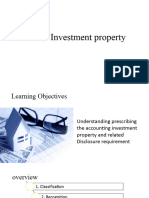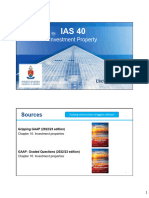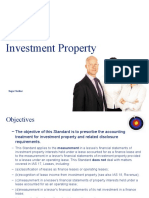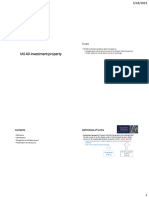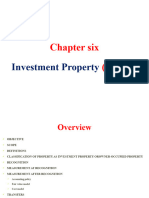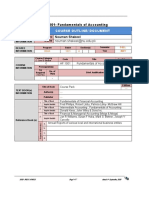0% found this document useful (0 votes)
95 views52 pagesIAS 40: Investment Property Guide
The document discusses IAS 40 on investment properties. It covers key definitions, scope, initial and subsequent measurement, transfers, derecognition and disclosure requirements for investment properties. It also provides examples to illustrate concepts such as joint use properties and accounting for ancillary services.
Uploaded by
Wilhelmina KandjekeCopyright
© © All Rights Reserved
We take content rights seriously. If you suspect this is your content, claim it here.
Available Formats
Download as PDF, TXT or read online on Scribd
0% found this document useful (0 votes)
95 views52 pagesIAS 40: Investment Property Guide
The document discusses IAS 40 on investment properties. It covers key definitions, scope, initial and subsequent measurement, transfers, derecognition and disclosure requirements for investment properties. It also provides examples to illustrate concepts such as joint use properties and accounting for ancillary services.
Uploaded by
Wilhelmina KandjekeCopyright
© © All Rights Reserved
We take content rights seriously. If you suspect this is your content, claim it here.
Available Formats
Download as PDF, TXT or read online on Scribd
/ 52

